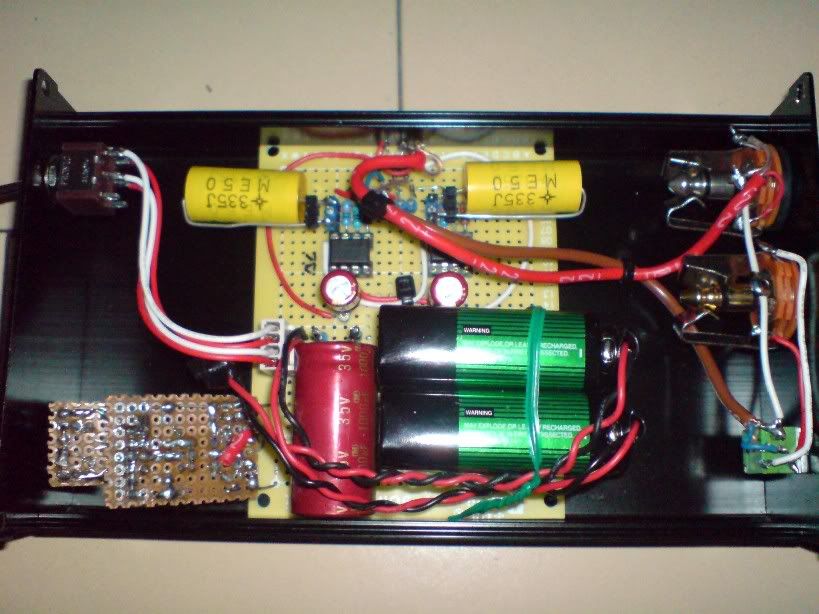Mayzei
100+ Head-Fier
- Joined
- Feb 2, 2009
- Posts
- 172
- Likes
- 10
That's well cool, you could fade them in and out. 
xx
xx


| Originally Posted by ph33lix /img/forum/go_quote.gif You have a very very nice proto-board there. I built mine on this kind of board too. Don't worry about bridging one point to another. One tip I use is to tin the two points you intend to join, then supply generous amounts of solder while you shuffle the iron between the two joints. It'll bridge very easily... sometimes too easily, which tends to end up in frustrating unintentional shorts to surrounding components when you're not careful. If you wish, I can take a pic of the underside too, but it's quite a mess and I doubt it'd help. LOL |

| Originally Posted by Bullseye /img/forum/go_quote.gif Well today I started. Damn my fingers hurt a bit from touching the sucking wire -works good sometimes even too good and sucks the metal fast- Trying to bridge one point to another was indeed impossible... And in some of the points if I put a big blob over the holes then I could not pass any metal through them, as they were covered. I should start with the jumpers first, no? In order to follow the same type of board. Oh and I'd really appreciate a pict of the underside of your build. Guess I am going to give it another try, plus I will have to return soon to get more soldering iron 
|
| Originally Posted by Bullseye /img/forum/go_quote.gif thanks for the pictures. I had to stop due to work, but I put the jumpers, R1 and one C1, then if I am not wrong I should look at the schematics and close the power supply circuit with either wire or solder. Oh and how can I easily cut a board? I need to cut it in different sizes. |






| Originally Posted by Bullseye /img/forum/go_quote.gif There is one thing I don't understand at the moment, and it is what the jumpers do. Are they another way to link to holes together?. |

| Originally Posted by Bullseye /img/forum/go_quote.gif On the yellow part you marked zkool48, why are 3 holes needed to be linked? Is that so that when making the schematic out of those connections everything can be set as in a single line? (basically that is how the schematics are) |



